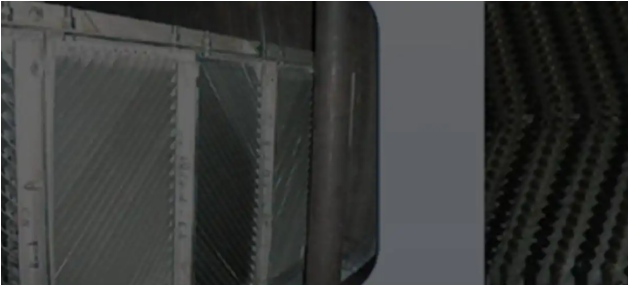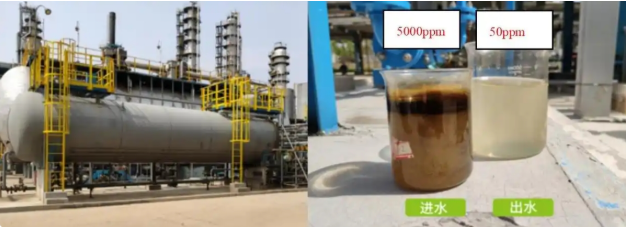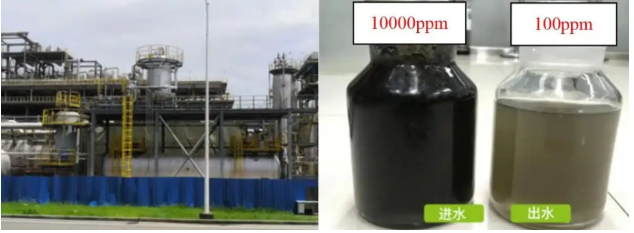The Application of Coalescing Pressure Degreaser
The treatment of oily wastewater generated by industrial production poses a significant challenge in the field of environmental protection. Oily wastewater contaminates the environment and threatens public health. Such wastewater is characterized by an in-homogeneous oil-water mixture, small oil droplet size, high emulsification, and potential chemical additives. Conventional treatment methods face issues such as low removal efficiency, high costs, complex operation, and large footprint, promoting the need for more efficient and economical technologies.
Ⅰ. Challenges of Oily Wastewater
Oily wastewater primarily originates from petroleum extraction, processing, transportation, as well as machinery manufacturing and metal processing. It is characterized by high concentration of suspended oil droplets, emulsified oil and dissolved oil, resulting in a complex composition that makes treatment challenging. Due to the high stability of the emulsion, conventional physical methods (such as gravity sedimentation and air flotation) exhibit low efficiency, making it difficult to meet stringent environmental standard. Here are some challenges:
1. Low oil-water separation efficiency, often failing to meet discharge standards.
2. Difficulty in breaking emulsions and removing small oil droplets.
3. High energy consumption and operational costs associated with conventional methods.
4. Requires frequent manual maintenance and involves complex operations.
Ⅱ. The Working Principles and Advantage of Coalescing Pressure Degreaser
The degreaser utilizes advanced coalescing technology to effectively capture and coalesce small oil droplets through specialized filter media and innovative design. The mechanism operates on the principle of leveraging the oleophilic nature of the filter material, which adsorbs dispersed oil droplets in water and coalesces them into larger ones, thereby accelerating oil-water separation.
1. CFD-optimized internal flow field: The design is refined through computational fluid dynamics (CFD) simulations to ensure efficient wastewater flow and enhance separation performance.
2. Specialized coalescing internals: Effectively increase oil droplet size, accelerate separation, and improve oil removal efficiency.
3. Fully automated control: Minimizes manual intervention, reducing operational complexity and maintenance costs.
4. Pressurized-sealed oil removal: Operates within a sealed system to prevent secondary pollution and ensure environmental compliance.
Its advantages include:
1. High oil removal efficiency: Capable of effectively removing oil droplets with a diameter less than 10㎛ achieving a treatment efficiency of over 99%.
2. Stable performance: Suitable for treating oily wastewater of various concentrations and types, delivering consistent and reliable results.
3. Energy-saving and environmentally friendly: Specialized design for low energy consumption and reduced operating costs, meeting environmental standards.
4. Ease of operation: Highly automated with simplified maintenance, significantly reducing labor requirements.
5. Compact footprint: Features a space-saving structure, occupying only one-third of the area required by conventional processes, making it adaptable to diverse on-spot conditions.
Ⅲ. The Application Prospect of Coalescing Pressure Degreaser
With increasingly stringent environmental regulations and growing corporate emphasis on sustainable development, the coalescing pressure degreaser hold broad application prospects. They are not only suitable for the petroleum, chemical, and machinery manufacturing industries but can also be widely applied in wastewater treatment across sectors such as shipbuilding, automotive manufacturing, and food processing.

Its specific applications include:
1. Petrochemical industry: Used for treating oily wastewater in refineries and chemical plants, aiding compliance with discharge standards.
2. Machinery manufacturing: handles oily wastewater from machining processes, enhancing water recycling rates.
3. Shipbuilding industry: Processes oily wastewater from vessels, meeting International Maritime Organization (IMO) regulations.
4. Municipal wastewater treatment: Serves as a pre-treatment unit to improve overall treatment efficiency.

Case Studies:
1. A petrochemical plant in Hebei Province: Treating oily electric desalination wastewater with influent oil content >5,000 mg/L. After implementing a two-stage CDFU + Coalescing Pressure Degreaser, the effluent achieved oil content <50 mg/L and suspended solids <100 mg/L.
2. A petrochemical plant in Sichuan Province: Treating oily wastewater with influent oil content >10,000 mg/L. After implementing a Coalescing Pressure Degreaser + CDFU, the effluent achieved oil content <100 mg/L with over 98% of oil removal rate and only 15-20min retention time.
The Coalescing Pressure Degreaser has been extensively validated in long-term industrial applications, demonstrating rapid and effective treatment of oily wastewater while outperforming other technologies. Its prospects are highly promising. With ongoing technological advancements and optimization, the system is expected to further reduce costs and enhance efficiency, providing an economically viable solution for a broader range of enterprises.
